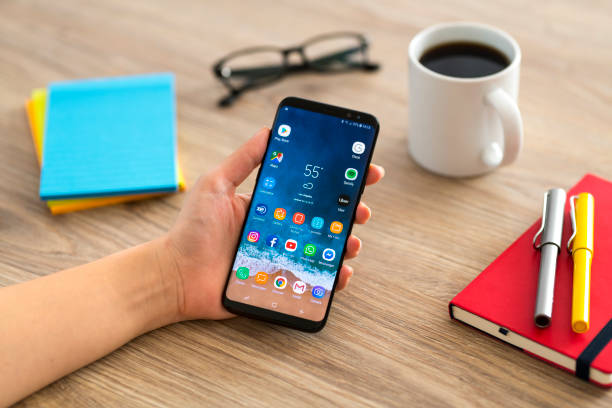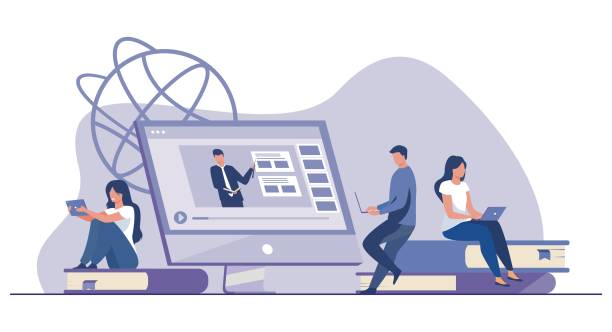Android 12 is now available for download after nearly eight months of developer previews and beta testing. It comes with a slew of new functionality as well as a major design overhaul.
In addition to the main release, Google conducted one of the largest beta programs in its history, with a dozen OEMs participating. With a compatible phone, you can quickly install the updates without any problems.
There are a few more minor changes in Android 12. Among the items on the list are:
- Notifications have been somewhat changed.
- Animations to make the discourse more entertaining
- Always-on display that varies depending on whether or not you’ve received any alerts
- Gesture controls have been improved.
- A slew of new emojis has been released.
- In the accessibility options, choose the screen dimming mode.
- HEVC (High-Efficiency Video Coding) is a kind of video
- ]Support for AVIF images
- Audio with several channels
- Optimizations for unusually big and colorful displays
- Splash screens that are universal
- Application optimizations
- Improvements to the picture-in-picture
- Improvements to the mainline project
These tiny modifications may be seen in numerous places across the OS. There’s also a new charging animation, which allows you to plug in your phone and see a fresh animation. Not only does the notification team get a slight visual update to match the aesthetics of Android 12, but several system modifications also help apps launch faster while opened from a notice.
New Functions
The majority of the new features improved the overall quality of the operating system. You may hire an android application developer to design an app using these new capabilities and integrate them into your app. Here’s a brief rundown of Android 12’s new features.
-
Screenshots that scroll
Although scrolling screenshots were available prior to Android 12, the new feature is a welcome addition. This functionality was included in the third beta. What is the best way to do it? To acquire a complete scrolling screenshot, take a screenshot as usual and then click the Capture More option. If you like, you can even crop from there. In addition, the snapshot editing portion has been enhanced with additional options such as text addition. Users may effortlessly share social media and eCommerce content with this tool.
-
AppSearch
AppSearch is a useful and innovative function. It allows you to search for items within applications. For years, it has been a feature of other operating systems such as Windows. The search engine can literally peek into your apps and deliver search results based on what it sees. If you search for anything you typed in a note, for example, the search will take you to that note without requiring you to open the app.
The function also works while you’re not connected to the internet. You may even search for any album, and the results will come from your preferred streaming app. AppSearch, according to Google, will utilize fewer resources and produce results faster than in-device search.
-
In the Media Player, you may choose from a variety of audio options
You may change your audio source using the media player under the Quick Settings. Simply press the button to get a list of all the devices that are currently connected. By pushing a button, you may switch from your Bluetooth speaker to your phone speaker, for example.
-
One-Handed Operation
One-handed mode is built into Android 12. It can be found in Settings, where you may enable it by heading to System, then Gestures. This setting reduces the size of everything to half its original size. It appears to be similar to multi-window mode. The whole top half of the screen is blank. On larger phones, this mode makes it easy to access almost everything with one hand.
-
Suggestions in Summary
Google also included some ideas for an overview. When you go into the recent applications area to check what’s new, you’ll get a list of ideas for things to do. If you have a browser open, for example, your recent applications may provide choices for quick page sharing, such as copy, share, and so on.
Every new version of Android introduces a slew of small changes, the most notable of which are new APIs for developers that improve app performance. Some of the under-the-hood changes in Android 12 are listed below.
Changes Under the Hood
-
Combined Haptic and Audio Feedback
This is a function that you’re certainly familiar with from gaming consoles. When your controller shakes in reaction to a fake explosion on the screen, you’ll be aware of this function. This capability is built-in to Android 12. When a virtual action occurs on the screen, Android game developers may make your phone vibrate. There are various non-gaming applications as well, such as synchronizing ringtones with your personalized ringtone when watching movies.
-
Hibernation of an App
Unused application is a new area in Android 12’s Settings. This new area contains apps that you haven’t used in a certain length of time. All of the permissions for the applications in this area have been revoked, and they are essentially dormant until you open them again. If you desire, you may disable this feature in any app.
-
APIs for Game Modes
Game developers will like Android 12’s Game Mode APIs. For simpler optimization, the new API allows developers to integrate all of the variable performance routines. For example, a programmer may create a mode that reduces performance while preserving battery life, or vice versa. In addition, it is expected that Android’s Game Dashboard will be available in 2022.
-
Enhancements to Security and Privacy
Normally, Google makes a slew of modest updates, but in recent years, the company has chosen for larger, more significant security upgrades.
There were a few minor security patches, including:
-
MAC Address for Restricted Netlink
Only a few privileged applications in Android 11 have access to a device’s Netlink MAC address. However, with Android 12, Google made it impossible for all applications to read it.
-
Changes in Bluetooth Permissions
Apps running on the Android 12 operating system may check for Bluetooth devices without requesting your location.
-
Sensor Restrictions on Devices
Device sensors that detect motion or movement now have refresh limitations.
At Google I/O 2021, the Privacy Dashboard will be a major issue. It’s exactly what it says on the tin. This dashboard, which you can find in the settings area, will show you which applications utilized specific permissions, when, and how frequently. On the dashboard’s first page, there’s a pie chart that shows how many permissions are in use. You can view a breakdown of which apps utilized the permission and when by clicking on any category. You may even prevent some apps from accessing certain rights.
Conclusion
Using Android 12 to launch your mobile app will increase its overall performance. Android features improved upgrades for every mobile app, from eCommerce to gaming. Android 12 is poised to make a big rise in the efficiency of your app with a number of small adjustments. With compatible devices, app users may experience the features and functions of Android 12.
Because the competition is already fierce, you must first be aware of the most recent requests, update your Android app properly, and advertise it effectively. You may engage a dedicated Android developer to assist you in designing your Android app with the needed functionality to make this process go smoothly.
Summary:
The Android 12 operating system comes with a slew of new features and enhancements. The feature improves the app’s overall performance and efficiency. Take a look at those upgrades to see how they may help your app deliver better customer service.
















